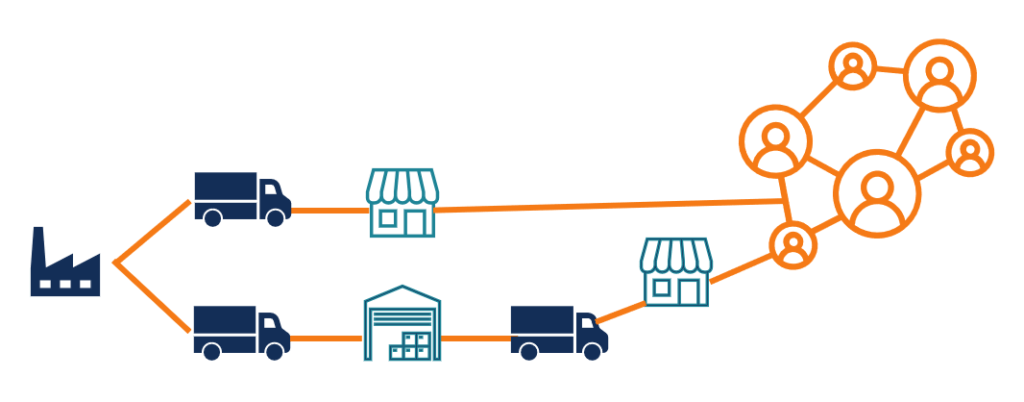Distribution Network
A distribution network can be seen as the flow of goods from a producer or supplier to an end consumer. The network consists of storage facilities, warehouses, and transportation systems that support the movement of goods until they reach the end consumer.
DESIGN OPTIONS OF A DISTRIBUTION NETWORK
- Distributor storage with package carrier delivery.
- Manufacturer storage with direct shipping and in-transit merge.
- Retail storage with customer pick-up.
- Manufacturer storage with direct shipping.
- Manufacturer/distributor storage with customer pick-up.
- Distributor storage with last-mile delivery.
Design Options for a Distribution Network
We will discuss distribution network choices in the context of distribution from the manufacturer to
the end consumer. When considering distribution between any other pair of stages, such as supplier to
6
manufacturer, many of the same options still apply. There are two key decisions when designing a
distribution network:
1. Will the product be delivered to the customer's location or picked up from a preordained site?
2. Will the product flow through an intermediary (or intermediate location)?
Based on the choices for the two decisions, there are six distinct distribution network designs that are
classified as follows:
1. Manufacturer storage with direct shipping
2. Manufacturer storage with direct shipping and in-transit merge
3. Distributor storage with package carrier delivery
4. Distributor storage with last mile delivery
5. Manufacturer / distributor storage with customer pickup
6. Retail storage with customer pickup.
Factors Influencing distribution network design
- Customer needs that are met
- Cost of meeting customer needs
- Response time
- Product variety
- Product availability
- Customer experience
- Order visibility
- Returnability
- Inventories
- Transportation
- Facilities and handling
- Information




No comments